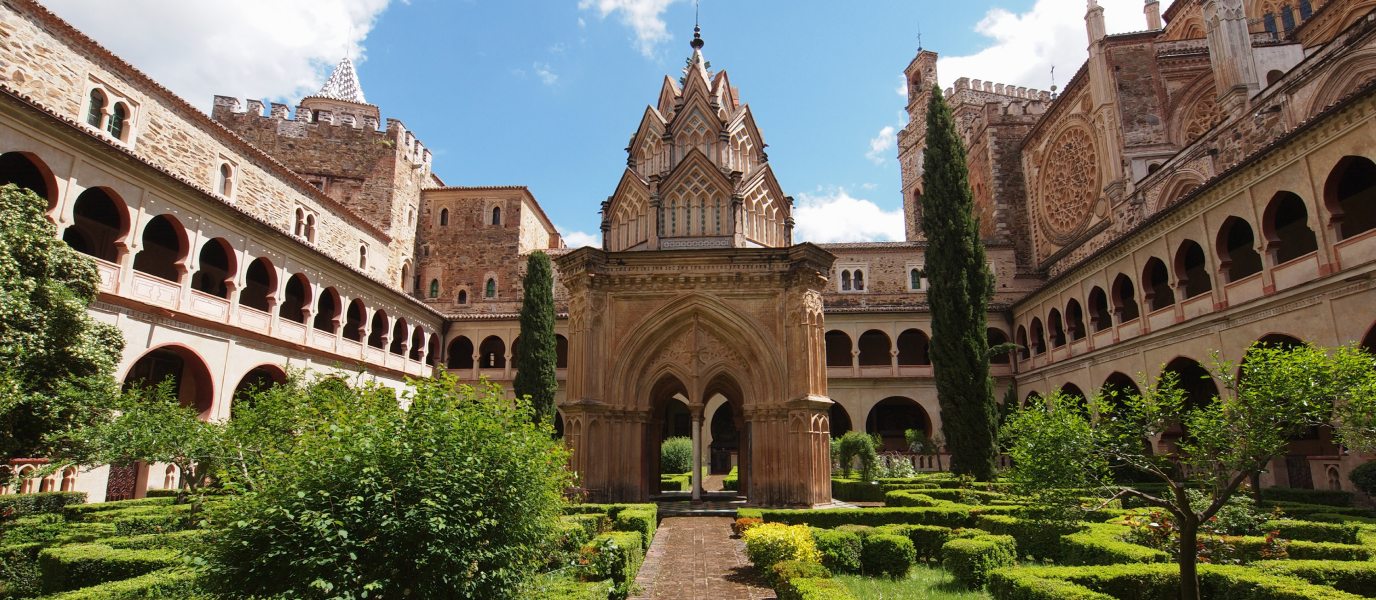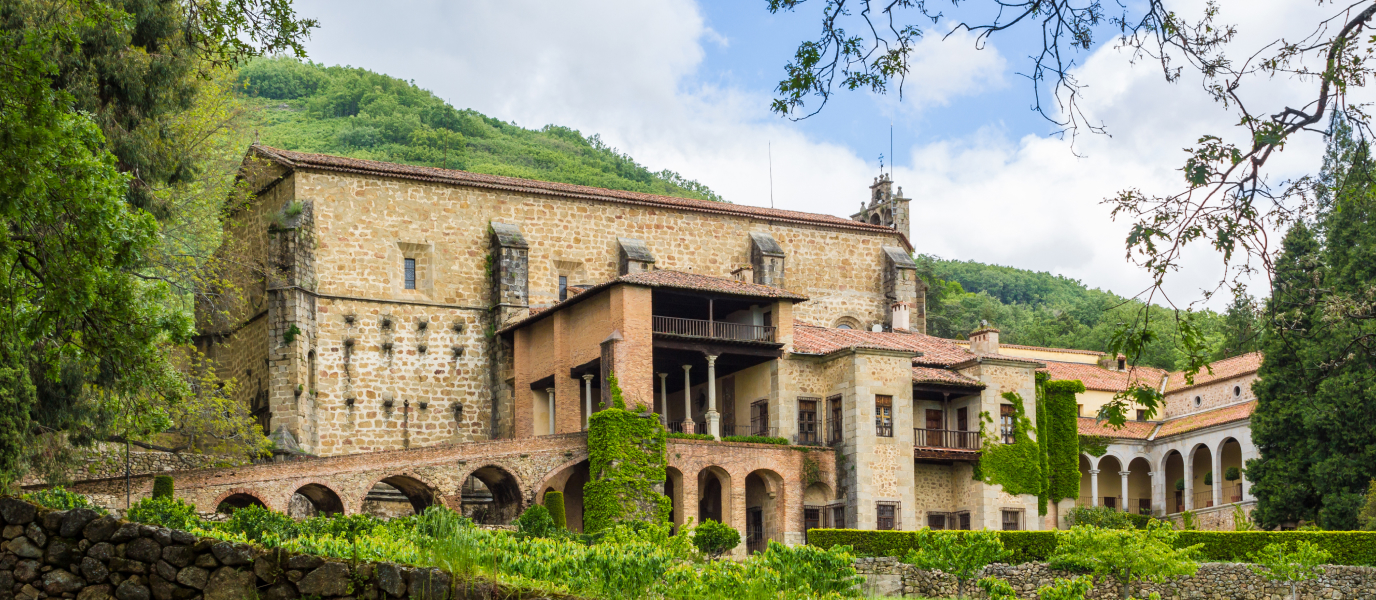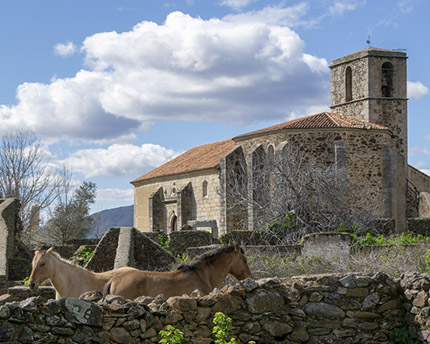If you are looking for an interesting trip to make in Cáceres, then you can’t go wrong with a visit to one of the most important architectural monuments in Extremadura: Guadalupe Monastery, the symbol of a region.
Barely 120 kilometres from Cáceres you will find a place full of legends. The founding legend of Guadalupe says that, towards the end of the 12th century, a shepherd called Gil Cordero discovered a statue of the Virgin Mary in the River Guadalupe and instantly set about building a shrine to her on that spot. Over the years, this shrine turned into the extravagant Royal Monastery of Santa María de Guadalupe, and village you can see today. It is an authentic pilgrimage site, one of the most famous after Santiago de Compostela, and it contains more than one treasure.
The Monastery of the Virgin of Guadalupe
Declared a UNESCO Cultural Heritage site in 1993, the monastery was catapulted from a humble shrine into a famous pilgrimage site thanks to King Alfonso XI, who felt a strong connection with the Virgin of Guadalupe, Patron Saint of Extremadura, after he prayed to her to win the Battle of Salado. After his victory, he ordered that a new church be built in the Mudéjar style, of which you can still see the apse today.
This ‘new church’ is full of history, including two moments when the Catholic Monarchs met with Christopher Columbus before his famous voyage to the Americas. It is said that Columbus asked the Virgin Mary for protection here before embarking.
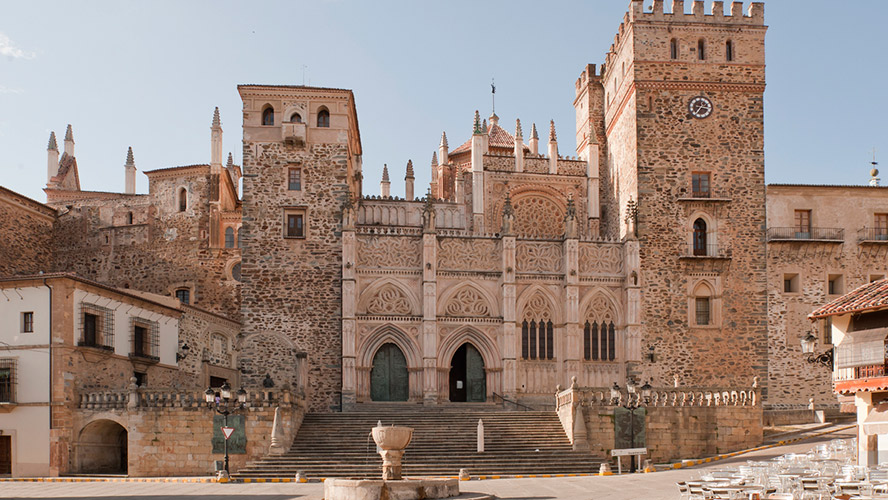
The building you can see today was building the beginning of the 15th century. What is noticeable at first glance is the mix of architectural styles it contains: gothic, Mudéjar, renaissance, baroque, and neoclassical. It is an exceptional architectural work dedicated to housing the image of the Virgin of Guadalupe, a wooden Romanesque statue carved towards the end of the 12th century.
The church consists of three naves with a Latin cross floor and a polygonal apse. The gothic elements are visible in the vaulted ceiling and in the wide windows that bathe the central nave in light. Take a moment to marvel at the main altarpiece, one of the most beautiful pieces of art in the monastery, designed by Juan Gómez de Mora and made by Juan Bautista Montenegro, with sculptures and paintings from various artists of the era.
The Mudéjar cloister is another gem of this building, with two floors and a shrine in its centre, decorated with beautiful plasterwork and tiles. Here you will also find many sepulchres that give the cloister a sense of solemnity and calm.
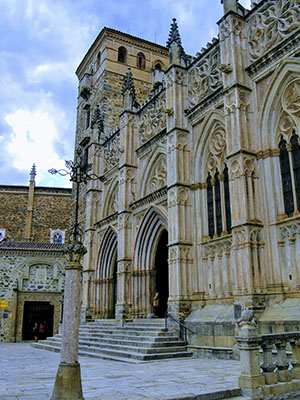
The gothic cloister is located in what is the hostelry, today. Here, gothic and Mudéjar art and architecture blend together, such as in the pointed arches decorated with ornate tracery. The Mudéjar influence is felt most strongly in the windows and their surrounding ornamentation.
The different chapels make this religious complex the architectural smorgasbord that it is. The Capilla de Santa Ana with its Flemish murals; the Real Capilla de Santa Catarina, with its vaulted ceilings; the beautiful 16th century Capilla de San José, with its dome and cupola and baroque paintings; El Camarín de la Virgen, and its intricate baroque decorations, which include paintings by Luca Giordano and murals by Francesco Leonardoni.
Three museums and the Extremaduran Sistine Chapel
The monastery’s museums are also worth a visit. The Museo de Bordados (Embroidery Museum) is found in the old refectory and contains a collection of the embroidery that used to be made in the workshop nearby. El Museo de los Libros Miniados is in the Mudéjar cloister and contains priceless books from the 15th century. El Museo de Pintura y Escultura is a must-see for art lovers, with pieces by Juan de Flandes, Goya, Zurbarán and El Greco.
Be sure not to miss the impressive Sacristía chapel, known locally as the ‘Extremaduran Sistine Chapel’. The Hieronymite monks hired Zurbarán to create eight paintings for this chapel, which you can see today in their original positions.
Even contemporary architecture has a place in Guadalupe Monastery, such as the hostelry dining room, which is a work by the modern Spanish architect Rafael Moneo.
What to see in Guadalupe, a small Extremaduran village
This small municipality contains a surprising number of beautiful monuments and other locales with which to fill a day out nicely. In the Puebla de Guadalupe, which steadily grew around the old chapel, there are many unmissable buildings, such as the beautiful Historical-Artistic centre, dating back to the 14th and 16th centuries, where you can lose yourself happily in its narrow streets.
-
Plaza de Santa María de Guadalupe.
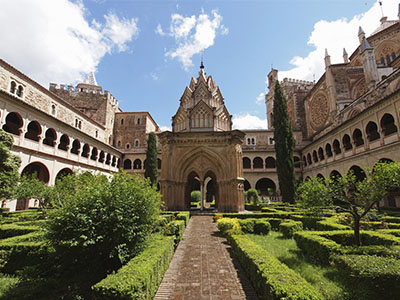
This is one of the most popular places in the village and a place where you can access the monastery, too. Frequented by pilgrims and locals alike, this square and its surrounding streets are ideal when looking to sample traditional food from Extremadura. A good plate of Extremaduran migas or the famous morcilla de Guadalupe are two such unmissable dishes. Having a drink with views of the majestic monastery is a delight but make sure that you take the time to visit El Arco de Sevilla, Calle Real and El Arco del Chorro, too.
-
Colegio de Infantes.
This is another exquisite example of Mudéjar architecture. This medieval school is now a rural inn with a patio that simply must be a part of your itinerary.
-
Iglesia de la Santa Trinidad.
Next to the monastery there is another baroque church by Manuel de Lara Churriguera. Be sure to check the town’s official website as this church is often used as an auditorium too.
-
Ermita del Humilladero.
If you fancy taking a walk then make your way up the Altamira hill, a couple of kilometres from the centre of Guadalupe. There you will find the quaint chapel known as El Humilladero, designed in the Gothic-Mudéjar style and with spectacular panoramic views of the monastery and the surrounding area.
Before you go, be sure to take a walk around the Old Jewish Quarter where you can see delightful traditional houses with balconies strewn with flowers.

























































